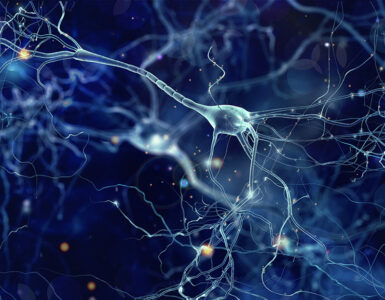by K.L. Angelo
On My Mind
Nathan, a deaf accountant, is walking home late one night from a Chicago firm. As he follows the river walk to his apartment, he occasionally stops and looks down at the smartphone in his hand. An app is open and words appear across the screen as a novel is being typed hands-free. The aspiring author doesn’t see or hear three men approach him until it’s too late, but he does get a good look at one of the unmasked criminals before he’s knocked unconscious.
When he wakes up, he’s in the hospital. A detective writes down a question on his tablet and hands it to him: “Can you help us identify who did this to you?”
Nathan nods.
The detective pulls out what looks like a helmet and several wires. He then writes something else on the tablet: “Do I have your permission to synch up and ask you a few more questions?”
Nathan nods again.
Electrodes are carefully placed around Nathan’s head, avoiding the stitches and wound caused from the attack. The detective hooks up the wires to a box next to the hospital bed, then puts on the helmet. Several minutes pass as both individuals stare at each other.
Finally, the detective removes everything and writes something else on his tablet: “We will circulate the image you gave and do an emergency BOLO within the hour.”
True to the detective’s word, smartphones across the city buzz and ping with the “Be On the Lookout For” neuro-image of the primary suspect. Within hours, all three suspects are apprehended.
Is the scenario above the future of forensic neuropsychology? Crime aside, could advances in technology such as these help blind and/or deaf individuals—or even those with other neuro disabilities or disadvantages—communicate better and live more integrated lives? Could advances in neurotechnologies extinguish mental illnesses and eliminate bipolar disorder, PTSD, or anxiety and suicidal tendencies?
On the other side of the argument, could neuroscience be used in times of war to weaken and eliminate the enemy? Could the military use new technologies to subdue and control a populous? And what would happen to someone’s free will and cognitive liberty in such a controlled government? Could organizations such as the Pentagon’s Defense Advanced Research Projects Agency (DARPA) use neurotechnologies to develop new war games or means of torture?
Invincible
Some of the earliest technologies to study the brain were developed a few decades ago. Live imaging machines such as magnetic resonance imaging (MRI), computed tomography (CT), and superconducting quantum interference devices (SQUIDs) have been used to diagnose diseases and cancers. CT scans, for example, have been around since the 1970s; and, while most scans are now done using MRIs, CTs still provide details of the brain such as aneurysms, cancers and degeneration markers. SQUIDs are used to measure the magnetic fields in the brain produced by naturally occurring electrical currents, while MRIs can detail the topological and physical structure of the organ. Functional MRIs (fMRIs) go a step further and measure oxygen levels in the brain after certain regions have been activated.
As scientists and doctors began to understand the brain and how electric currents and magnetic fields were created, more intimate machinery began being used. Transcranial magnetic stimulation (TMS) and transcranial direct current stimulation (tDCS) send magnetic pulses and low levels of constant current, respectively, to stimulate and target areas of the brain. Originally designed to help brain injury patients, doctors and scientists have discovered that TMSs and tDCSs have the ability to treat mental illnesses, enhance language and mathematical abilities, and improve attention spans, memory, and coordination.
Instruments such as these have cleared a path for more neuroscience and technology possibilities. And, the Obama Administration’s Brain Research through Advancing Innovative Neurotechnologies (BRAIN) has paved that path towards “accelerating the development and application” of more advanced neurotechnology. Scientists and researchers are now learning and developing such things as:
- Neurograins: salt-grain-sized electronics which can be implanted in the brain and allow it to communicate digitally and wirelessly with the outside world.
- Hands-free typing: Facebook’s brain-to-text initiative has developed electrodes that can be implanted in the brain for individuals, such as those who suffer from ALS or paraplegics, to text and write instead of using their eyes to blink or guide lasers.
- Cerebral organoids: miniature brains created from human stem cells that can grow functional neurons, cortex layers, and other portions of a full-sized brain. These can fuse with brain tissue in areas of neurodegeneration, accelerate brain growth, and potentially reverse Alzheimer’s.
- New neural communication methods: wireless jumping of neurons from one brain tissue section to another, even when those tissue sections were severed. This discovery is providing scientists with new insights how neurons talk to one another, a process still not understood.
- Microglial cell depletion and cyclical sleep cycles: Astrocytes (the “glue” of the nervous system crucial for human internal clocks) begin clearing and eating parts of the brain when sleep-deprived. However, individuals who napped and slept in consistent cycles had less damage done by the astrocytes. Microglial activity are linked to forms of neurodegeneration and brain diseases.
Scientists are pushing their discoveries even further and are working on ways to identify consciousness and predict thought. What if all of these innovations switched off PTSD, anxiety, and eliminated suicidal tendencies? What if Parkinson’s and Huntington’s patients could be cured or dementia and Alzheimer’s patients could gain their memories back? What if Tay-Sachs disease could be eliminated before a child were born?
Noir
But what if those same innovations and discoveries were used against people? Could governments—or even billionaires who fund the research in the private sector—use these technologies against the populous, potentially torturing information out of someone or rendering them incapacitated? And if these technologies are designed to heal the mind, can they also reverse it, causing irreparable damage?
Consider some of the following:
- Researchers have reanimated brains from decapitated pigs, keeping the organs functional for up to thirty-six hours. They discovered that billions of individual cells were healthy and capable of activity. If reanimation were to occur successfully in humans, what kind of religious, legal, and/or political challenges would that person face? Is there still consciousness? Would a person’s mind, once reawakened, be trapped in an extreme deprivation chamber? Would they be able to communicate, or would they live in a new hell?
- Scientists have been able to “inject information” into monkeys’ brains, allowing them to stimulate the primary sensory cortices and input information into the brain. While this could benefit people who’ve lost function in their brains due to a stroke, other disease, or injury, could researchers also manipulate memory or control a person’s mind to commit a crime? Could brain-computer interfaces over-stimulate the organ and cause pain as a means of torturing information out of a criminal? Could a government force its citizens to upload political propaganda and control what information they learned?
- Neurocognitive weapons have been in the works in recent years and have sparked ethical debates. Military organizations could create super soldiers or amplified intelligence (IA) humans. Would this give one country advantage over another in a physical confrontation? Are IA and computer-interfaced humans one step closer to true cyborgs?
- Rogue organizations could induce acoustic attacks or create more advanced nerve agents or pathogens (for example, sarin and anthrax, respectively). Do neurocognitive weapons have the capabilities to wipe out a large swath of a population from across the ocean or from space? Can a person’s mind be turned against themselves?
- Direct brain-to-brain communication has been tested with promising results. What if advancements such as this could be used by law enforcement to interrogate witnesses or guilty parties? Could law enforcement also extract other information from a person and use it against them? What thoughts would be safe and protected by rights? Do someone’s thoughts even have rights?
- Scientists can read thoughts before a person can. Would this be used like an advanced lie detector test, catching criminals in untruths before they can respond during an exam? Could a mind-reading device be created in the near-future to uncover deeply held secrets and potentially blackmail individuals? If a hacker broke into someone’s mind, would this be seen as a new form of rape or assault?
What Have You Become?
The brain, in its most basic components, is nothing but a bunch of multi-connected wiring, transmitting data through electrochemical reactions, magnetic fields, and electrical currents. Stimulating the organ at the correct location with the right amounts of frequencies, amplitude, and duration, can fire up the body into motion.
Control any of these elements, and one can wipe out mental illness, reverse disease, and restore nerve damage. However, control any of these elements and one can cause permanent damage, read contraband thoughts, or permanently wipe memory.
Is the brain the next frontier in weaponization? Is neurotechnology and its dual-use implementations the next battlefield in a global war or takeover? What will a person become when the mind is plugged in and memory is downloaded or thought is uploaded? What will a civilization become when neurotechnologies cross the ethical and moral lines?










Add comment